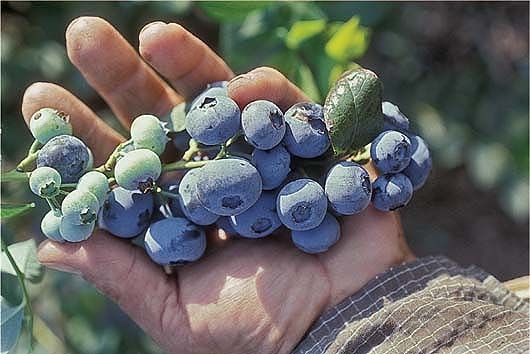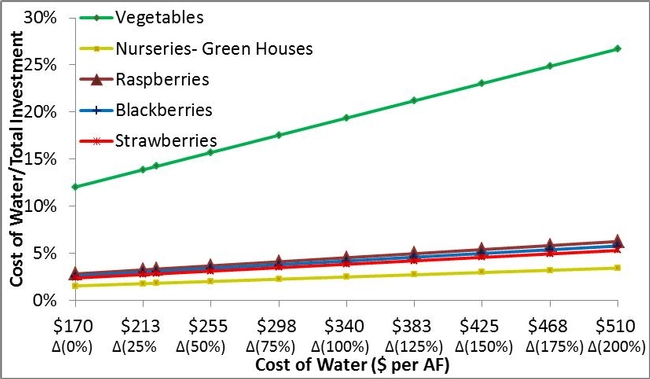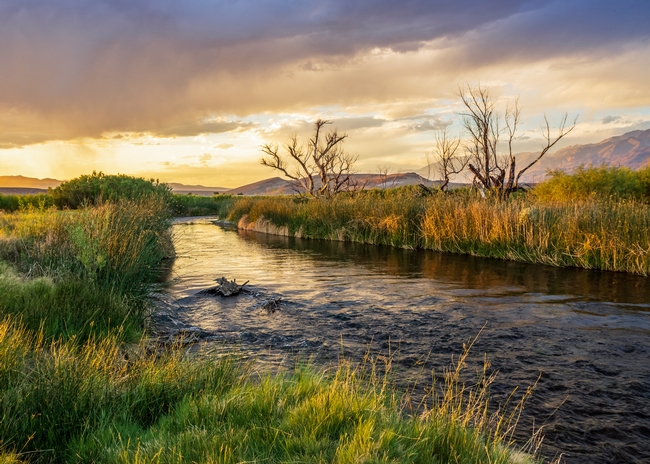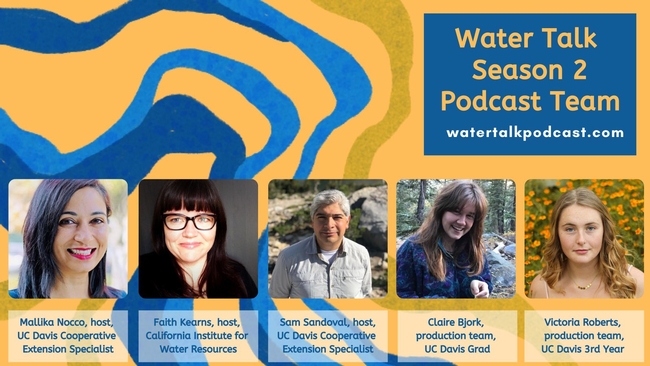
Posts Tagged: Samuel Sandoval
Drought is back! And so is Water Talk
The Water Talk podcast returns Friday, April 2, for its second season. This year's podcast will include a focus on the water issue on many minds at the end of a relatively dry rainy season: drought. As Water Talk co-host Faith Kearns says in the Season 2 preview episode, “in California, drought is not ‘if', it's ‘when'.”
The second season will include a diverse group of guests from every corner of the state; border to border. “We thought a lot about the geography of the state, the identities of the people with whom we were speaking, and the experts we were talking with, and the topics,” says co-host Mallika Nocco.
The weekly podcast will feature discussions of agriculture, water policy, environmental and social justice, land and wildlife management, water for cities, Indigenous perspectives on water, climate change, and other issues related to California water.
Some aspects of the podcast were modified in the second season as well. For example, instead of recording the podcast during a simultaneous live event, each episode was recorded with only the co-hosts. In addition, two production assistants supported the development of each episode.
“The Water Talk team has new members!” the group tweeted. “We were thrilled to welcome ultra-talented Claire Bjork and Victoria Roberts as production support for Season 2, thanks in part to a UC ANR Renewable Resources Extension Act grant.”
You can subscribe, listen and download all the episodes in Spotify, Apple and Google podcasts, as well as on the podcast's webpage. In addition to listening to the podcast, you can follow @podcast_water on Twitter for water-related news.
To catch up on Season 1 of Water Talk, visit watertalkpodcast.com.
The Water Talk podcast is hosted by Mallika Nocco, UC Cooperative Extension specialist in the UC Davis Department of Land, Air, and Water Resources; Faith Kearns, California Institute for Water Resources academic coordinator; and Samuel Sandoval Solis, UC Cooperative Extension specialist in UC Davis Department of Land, Air, and Water Resources.
Samuel Sandoval Solis shares his passion for water resource management

Solis was born in Mexico City and began contributing to the family income at the age of 13 as a grocery store bagger. He earned a bachelor's degree in civil engineering at Instituto Politecnico Nacional.
When Solis was hired to help a community of 300 manage its water resources, he was nervous about his abilities, the article said.
"However, like many hardworking Latinos, Samuel put his fear and doubts to the side, and decided to pursue this great opportunity," wrote reporter Vanessa Parra.
Solis earned a master's degree in hydraulics at Instituto Politecnico Nacional, and a Ph.D. in environmental and water resources engineering at the University of Texas, Austin. His research centered on the Rio Grande, a river shared by Mexico and the U.S. (Mexicans call the river Rio Bravo.)
"I was under friendly fire from people of both nations," Solis said. "Because I was doing my research in the Rio Grande/Bravo while living in Texas, people from the U.S. thought I was a spy and people from Mexico thought that I was a traitor," he said.
The language and culture barriers that Solis once perceived as negative characteristics became valuable assets when he joined the University of California. He is able to communicate with Spanish-speaking farmers on a personal level.
Solis began his work in California just as it was caught in the grip of the current four-year drought. The dry period, he said, can be viewed as a "tipping point" to change the way the state uses and manages its water. His research focuses on water planning and management.
"We develop methods for finding strategies to better distribute water, ensuring adequate quality and the right timing," Solis said. "We consider the scientific, social, environmental, and economic aspects of basins. Our goal is to improve California's water management through cooperation, shared vision and science-based solutions."
UC ANR researchers aim to minimize water use in blueberries

The story featured Darren Haver, a UC ANR Cooperative Extension advisor in Orange County and director of the UC South Coast Research and Extension Center in Irvine. At the center, blueberries are being grown with varying amounts of water to compare yield and quality. Because of the drought, farmers need to know how to minimize water use while maintaining a viable business.
"Part of my job as an advisor is to take that information and put it in a format that a farmer could use or the general public could use," he said. "It's my job to distill it down."
The story also notes that drought-tolerant dragon fruit are under study at that at the South Coast REC.
"We need to find more crops like this," Haver said.
Other drought news:
Diversification: A Response to Drought
Richard Jones, Growing Produce, April 27
Growers must prepare to make changes, especially if their sole focus is high-value crops, said Samuel Sandoval, UC ANR specialist in water resources management at UC Davis. “We're seeing many growers put a lot of investment risk on a resource — water — that's very unreliable. We need to think ahead of the curve and find systems that are more flexible,” he says. Sandoval's suggestion: diversifying with both permanent and annual crops.
Your water footprint is bigger than you realize
Laura Bliss, The Atlantic CityLab, April 28, 2015
In the developed world, every bite of food, every mile we drive, every light switch we flip relies on water. The average American has a "water footprint" of 2,220 gallons per person, per day. "The numbers are pretty accurate," says Doug Parker, director of the UC Agriculture and Natural Resources California Institute for Water Resources. "But my question is, what do you do with it? If I'm interested in solving the drought in California, using less energy from power plants doesn't really matter because that water can be used downstream by a farmer."
Optimizing irrigation may ease groundwater overdraft in Pajaro Valley

Groundwater makes up roughly 90 percent of the water delivered by Pajaro Valley’s Water Management Agency (PVWMA). There is a current overdraft of groundwater in the aquifers of this region, which calls for immediate action to protect their water source. Historically, the amount of groundwater in the aquifer was above sea level so the amount of salt water in the freshwater aquifer was kept at bay. Removing too much water from the ground at a faster rate than it is being replenished has caused seawater from the Pacific Ocean to enter the aquifer as the water level tries to even out. This seawater intrusion impairs water quality because saltwater is too saline for both agriculture and human consumption.


Agricultural conservation program
PVWMA asked Samuel Sandoval Solis, Ph.D., UC Cooperative Extension specialist in the Department of Land, Air and Water Resources at UC Davis, to help them with their agricultural conservation program. PVWMA wanted to know the volume water that could be potentially saved and the resulting economic impact of water savings on the valley.
The key to agricultural water savings is to water a crop to its evapotranspiration (ET) value. The ET value indicates optimum water amounts that should be applied in order for the water to be completely beneficial to the plants. To estimate the potential water savings, Sandoval and his UC Davis team – undergraduate student Vicki Lin and Ph.D. students Jenna Rodriguez and Belize Lane – had to determine how many growers were surpassing a crop’s ET value. The scientists interviewed growers to find out the volume of water each grower applied to the crops and the amount of money they invested in crop production. A statistical analysis was completed with applied water data of growers from PVWMA, information from the growers’ interviews, and expert-provided ET values to check for accuracy.
The scientists also analyzed land-use data sets from 2009 and 2011 for this project. The analysis focused on 2009 because it was a normal year in terms of groundwater extraction. They determined that Pajaro Valley can save between 4,600 and 5,100 acre feet per year through conservation. This agricultural water savings program is anticipated to contribute to 41 percent of the region’s total water savings just by using water more efficiently.
Vegetable growers would take hard hit

The full 37-page report on this project can be downloaded from a link at the top of http://watermanagement.ucdavis.edu/cooperative-extension/water-savings-agriculture.



